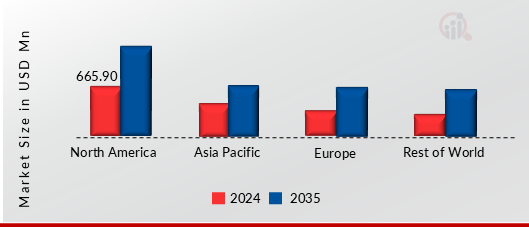Market Growth Projections
The Global Satellite Solar Panels Array Market Industry is poised for substantial growth, with projections indicating a market value of 875.0 USD Million in 2024 and a potential increase to 1617.0 USD Million by 2035. This growth trajectory suggests a compound annual growth rate of 5.74% from 2025 to 2035, reflecting the increasing adoption of solar technologies in various sectors. Factors such as technological advancements, government incentives, and the rising demand for renewable energy are likely to contribute to this upward trend. The market's expansion is indicative of a broader shift towards sustainable energy solutions on a global scale.
Rising Global Energy Needs
The rising global energy needs are a driving force behind the Global Satellite Solar Panels Array Market Industry. As populations grow and economies develop, the demand for energy continues to escalate. Solar energy, particularly from satellite arrays, presents a viable solution to meet these increasing demands sustainably. Countries are recognizing the potential of harnessing solar power from space to provide energy to remote and underserved regions. This shift towards utilizing satellite solar panels is expected to contribute to the market's growth, with projections indicating a valuation of 875.0 USD Million by 2024, as stakeholders seek innovative ways to address energy shortages.
Government Incentives and Subsidies
Government incentives and subsidies are pivotal in driving the Global Satellite Solar Panels Array Market Industry. Many countries are offering financial support to encourage the adoption of solar technologies, which can include tax credits, grants, and rebates. For example, the U.S. federal government has implemented various programs aimed at promoting solar energy, which have resulted in increased installations of solar panels. Such initiatives not only lower the financial barriers for consumers but also stimulate market growth. As a result, the market is expected to witness a compound annual growth rate of 5.74% from 2025 to 2035, indicating a robust future for satellite solar panel arrays.
Growing Space Exploration Activities
The expansion of space exploration activities is significantly influencing the Global Satellite Solar Panels Array Market Industry. As nations and private entities invest in space missions, the demand for reliable power sources in satellites has increased. Solar panels are favored for their ability to provide sustainable energy in space, making them essential for long-duration missions. The increasing number of satellites being launched, particularly for communication and Earth observation, underscores the necessity for efficient solar power solutions. This trend is likely to bolster the market, as more advanced satellite solar panel arrays are developed to meet the energy needs of future space endeavors.
Increasing Demand for Renewable Energy
The Global Satellite Solar Panels Array Market Industry is experiencing a surge in demand for renewable energy sources, driven by global initiatives to reduce carbon emissions. Governments worldwide are implementing policies that favor the adoption of solar technologies, which are perceived as cleaner alternatives to fossil fuels. For instance, the International Renewable Energy Agency reports that solar energy capacity has been increasing steadily, with projections indicating that the market could reach a valuation of 875.0 USD Million in 2024. This growing emphasis on sustainability is likely to propel investments in satellite solar panel arrays, as they offer efficient energy solutions for various applications.
Technological Advancements in Solar Panel Efficiency
Technological innovations are playing a crucial role in enhancing the efficiency of solar panels, thereby influencing the Global Satellite Solar Panels Array Market Industry. Recent advancements in materials science, such as the development of perovskite solar cells, have shown potential to significantly increase energy conversion rates. These improvements not only reduce the cost per watt of solar energy but also expand the applicability of satellite solar panels in diverse environments. As efficiency continues to rise, the market is projected to grow, with estimates suggesting a value of 1617.0 USD Million by 2035, reflecting the positive impact of these technological strides.






















Leave a Comment